ACCSEAS project
ends on a high
 HRH The Princess Royal addresses assembled ACCSEAS Conference delegates at the inaugural gathering
HRH The Princess Royal addresses assembled ACCSEAS Conference delegates at the inaugural gathering
ACCSEAS, an EU-funded project to support improved maritime access to the North Sea Region, has officially ended after implementing and demonstrating groundbreaking solutions to minimising future navigational risk.
Mrs Brigit Gijsbers, who opened the final ACCSEAS conference in February in
her capacity as Rijkwaterstaat’s Director of Maritime Affairs in the Netherlands, summarised the concerns facing maritime traffic in the North Sea Region: ‘Our country is situated on the shores of one of the busiest sea areas of the world, with currently over 243,000 ship movements along our coast and to/from our seaports. However, we should realize that shipping is no longer the only user community of the navigable space at sea.’
 An example of an ACCSEAS demonstration installation
An example of an ACCSEAS demonstration installation
Terma annual report
 Danish C-130J aircraft with flares – image courtesy and © Fototjenesten, Flyvestation Aalborg
Danish C-130J aircraft with flares – image courtesy and © Fototjenesten, Flyvestation Aalborg
It was reported from Lystrup, Denmark at the end of May 2015 that TERMA now has a heathy order backlog to provide for a comfortable business base in the 2015/16 fiscal year (FY 2015/16) and successive years.
Increased activities in the international defence, aerospace, and security markets secured an order intake in FY 2014/15 of MDKK 1,394, which is on par with
the previous year’s orderbook.
 Oersted satellite with boom. This Danish satellite is a unique success. Its
Oersted satellite with boom. This Danish satellite is a unique success. Its
precise magnetic measurements form the basis for the most accurate models of the Earth’s magnetic field and are used both to explore movements in the Earth’s core and to map anomalies in the Earth’s crust.
NTSB safety alert urges pilots
to ‘see and be seen’ in the air
 From Washington on 27 May the National Transportation Safety Board issued a Safety Alert urging pilots to vigilantly look out for other aircraft and to make their own presence known.
From Washington on 27 May the National Transportation Safety Board issued a Safety Alert urging pilots to vigilantly look out for other aircraft and to make their own presence known.
The Board has investigated numerous general aviation accidents in which pilots operating near one another did not maintain adequate visual lookout and failed to see and avoid other aircraft. Investigators also note that pilots can be distracted by technology such as cell phones, tablets and other devices that
challenge the see-and-avoid concept.
70th anniversary of VE day
air show
A colourful VE Day street party took place in the historic heart of the Imperial War Museum (IWM) at Duxford, Cambridgeshire (CB22 4QR) in the east of England over the Spring Bank Holiday weekend of 23 / 24 May. Patriotic bunting fluttered in the breeze as visitors, many in 1940’s dress, enjoyed the live entertainment on the Second World War stage, which was accompanied by colour film footage from VE Day, 8 May 1944.
 As part of the 70th anniversary of Victory in Europe commemoration at Duxford, Cambridgeshire on 23 May, the Bristol Blenheim Mk. I flies with two Mk. I Supermarine Spitfires. – © Imperial War Museum, reproduced here by kind permission.
As part of the 70th anniversary of Victory in Europe commemoration at Duxford, Cambridgeshire on 23 May, the Bristol Blenheim Mk. I flies with two Mk. I Supermarine Spitfires. – © Imperial War Museum, reproduced here by kind permission.
The VE Day Anniversary Air Show flying display which ran over two days told the story of the how the war was won in the air and was accompanied by music, wartime speeches and recordings of veterans’ memories.
 Over Duxford on 23 May the B-17 Flying Fortress Sally B accompanied by two P-51D Mustangs, a TF-51D Mustang and a Curtiss P-40F Warhawk. – Photo © Imperial War Museum, reproduced here by kind permission.
Over Duxford on 23 May the B-17 Flying Fortress Sally B accompanied by two P-51D Mustangs, a TF-51D Mustang and a Curtiss P-40F Warhawk. – Photo © Imperial War Museum, reproduced here by kind permission.
EuroShip install GPS backup technology

Ship management company, EuroShip Services Ltd, has installed eLoran as a back up to GPS to ensure the safety of its vessels operating off the coast of the UK. The installation is on a trial basis with a view to implementing it across the entire fleet of vessels managed by Euroship.
eLoran is a land based radio navigation system, proven to seamlessly take over in the event of a GPS outage. During its initial trial, EuroShip plans to simulate GPS outages allowing the eLoran system to take over the provision of
positioning, navigation and timing (PNT) data automatically.
 Pauline and Yasmine managed by EuroShip
Pauline and Yasmine managed by EuroShip
TransNav 2015
A reminder has been received of the 11th International Conference, TransNav 2015, on Marine Navigation and Safety of Sea Transportation, due to take place from 17 to 19 June 2015. This Conference is jointly organized by the Faculty of Navigation of the Gdynia Maritime University and The Nautical Institute.
Addressed to scientists and professionals in order to share their expert knowledge, experience and research results the event will concern a wealth of aspects of navigation, safety of navigation and sea transport.
A conference programme is now available, subject to modification, and is to be found here. Further Conference information can be obtained on the website.
Deadline for registration is 1 June.
ICAO wraps up successful
multi-region outreach

It was announced from Montreal on 1 May that the International Civil Aviation Organization (ICAO) successfully concluded its first round of Global Aviation Dialogues (GLADs) on Market-based Measures (MBMs) the previous month, covering all ICAO regions. The two-day GLADs sessions were designed to share information on MBMs and their potential role in mitigating CO2 emissions from international aviation, update ICAO’s progress on the development of its global MBM scheme, and provide an important opportunity for feedback and discussion amongst Member States and relevant organizations.
FAA / industry initiative will expand small UAS horizons
 On 6 May in Washington the US Department of Transportation’s Federal Aviation Administration (FAA) announced a partnership with industry to explore the next steps in unmanned aircraft operations beyond the type of operations the agency proposed in the draft small unmanned aircraft systems (UAS) rule it published in February.
On 6 May in Washington the US Department of Transportation’s Federal Aviation Administration (FAA) announced a partnership with industry to explore the next steps in unmanned aircraft operations beyond the type of operations the agency proposed in the draft small unmanned aircraft systems (UAS) rule it published in February.
Said US Transportation Secretary Anthony Foxx: ‘Government has some of the best and brightest minds in aviation, but we cannot operate in a vacuum. This is a big job, and we will get to our goal of safe, widespread UAS integration more quickly by leveraging the resources and expertise of the industry.’
CILT publish vision 2035 infographic
The Chartered Institute of Logistics and Transport (CILT), a leading professional body in the logistics and transport sector, published on 5 May an easily understood and visually representative infographic detailing the findings of the Institute’s Vision 2035 policy series.
It is understood the purpose of the Vision 2035 series is to look to the future and visualise how transport and logistics in Britain would develop, taking account of demographic changes, population growth, technological developments and social and political change.
CAA helicopter operations safety research
 Fugro is working with the UK Civil Aviation Authority (CAA) and Chevron North Sea Limited in a drive to improve helideck safety – Photo courtesy of Chevron North Sea Limited ©
Fugro is working with the UK Civil Aviation Authority (CAA) and Chevron North Sea Limited in a drive to improve helideck safety – Photo courtesy of Chevron North Sea Limited ©
Fugro is working with the UK Civil Aviation Authority (CAA) and Chevron North Sea Limited to improve helicopter safety regulations for the offshore industry.
The CAA has identified a number of development areas to help improve the safety of helicopter operations with afloat helidecks and has formulated a new technical specification for helideck monitoring systems (HMS).
In order to trial the new analysis the CAA required an HMS provider to design, engineer and test a real-time helideck monitoring data collection and display system that met the new specification. Trial results would then be used to validate the system’s suitability for incorporation in a new version of the CAA’s publication: Standards for Offshore Helicopter Landing Areas. (Otherwise known as CAP 437).
Philippines’ tsunami warning system
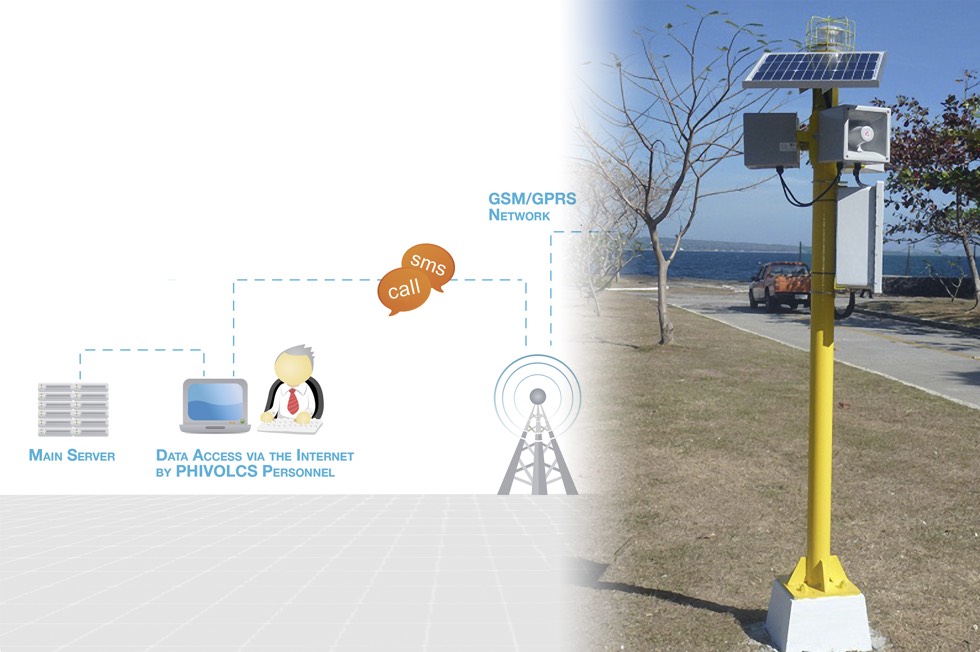
On 26 December 2004 the Indian Ocean Tsunami killed 230,000 people in fourteen countries, and swamped coastal communities with waves up to 30 metres in height. Following this tragic event, the UN set up the Indian Ocean Tsunami Warning System, and although not directly affected by the 2004 disaster, the Philippines have since set up a similar early warning arrangement. Areas on the west coast of the islands, which face the Manila Trench located between The Philippines and Vietnam, are at particular risk and the project is being progressively rolled out from the densely populated coastal towns and cities to the rest of the region, it has been reported.
ICAO’s No country left behind objectives
 During recent visits to Madagascar and the Comoros, ICAO Council President Dr Olumuyiwa Benard Aliu met senior government officials and promoted the Organization’s ‘No Country Left Behind’ Campaign aimed at helping States implement international standards set forth by the UN agency. In the Comoros from 28 to 31 March, President Aliu met the President of the Union of Comoros, HE Dr Ikililou Dhoinine, and senior government officials to review the progress made on the implementation of the ICAO Plan of Action for the Comoros and on the Abuja Safety Targets adopted by the African Ministerial Conference in 2012. Discussions also focused on ways and means of enhancing the State’s safety and security oversight capabilities and on ICAO’s full support for the ‘Vanilla Island’ initiative promoting air transport and tourism in the AFI region.
During recent visits to Madagascar and the Comoros, ICAO Council President Dr Olumuyiwa Benard Aliu met senior government officials and promoted the Organization’s ‘No Country Left Behind’ Campaign aimed at helping States implement international standards set forth by the UN agency. In the Comoros from 28 to 31 March, President Aliu met the President of the Union of Comoros, HE Dr Ikililou Dhoinine, and senior government officials to review the progress made on the implementation of the ICAO Plan of Action for the Comoros and on the Abuja Safety Targets adopted by the African Ministerial Conference in 2012. Discussions also focused on ways and means of enhancing the State’s safety and security oversight capabilities and on ICAO’s full support for the ‘Vanilla Island’ initiative promoting air transport and tourism in the AFI region.
Mediterranean crisis – shipping industry comments
on EU 10 point plan

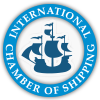 Merchant shipping industry repeats call for urgent and immediate collective action by EU member states
Merchant shipping industry repeats call for urgent and immediate collective action by EU member states
Following the meeting of EU Foreign and Interior Ministers in Luxembourg on 20 April the European and global shipping industries have welcomed the increased attention that all EU Member States are giving to the humanitarian crisis in the Mediterranean. This includes the ’10 Point Plan’ adopted as a result of the impetus provided by the terrible tragedy involving the loss of hundreds of lives at the weekend (18/19 April.)
After MH17:
Managing the network
at a time of crisis
 EUROCONTROL, the European organisation for safety in air navigation, has a pan-European scope as an intergovernmental organisation with 41 Member States, ensuring a uniform approach to safety in air traffic management as aircraft move across the airspace of its Member States.
EUROCONTROL, the European organisation for safety in air navigation, has a pan-European scope as an intergovernmental organisation with 41 Member States, ensuring a uniform approach to safety in air traffic management as aircraft move across the airspace of its Member States.
Last month EUROCONTROL’s Director General Frank Brenner informed the European Parliament that expanded safety and risk information is now available at all hours to aviation professionals.
In his intervention at the European Parliament’s Committee on Foreign affairs (AFET) and the Subcommittee on Security and Defence (SEDE), on 24 March,
Frank Brenner, outlined EUROCONTROL’s experience in dealing with safety situations in the air and the current state of play on conflict zones, especially after the recent ICAO High Level Safety Conference.
He explained that EUROCONTROL, the European Organisation for Safety in Air Navigation has a pan-European scope as an intergovernmental organisation with forty-one Member States, ensuring a uniform approach to safety in Air Traffic Management as aircraft move across the airspace of its Member States.
IALA workshop on human factors and ergonomics in VTS
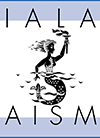 The International Association of Marine Aids to Navigation and Lighthouse Authorities (IALA), in conjunction with the Chalmers University of Technology, NNVO (the Dutch VTS Operator Training Foundation) and the Port of London Authority, will host an IALA Workshop on Human Factors and Ergonomics in VTS, from 12 to 16 October 2015. The workshop will be held at Chalmers University, Gothenburg, Sweden.
The International Association of Marine Aids to Navigation and Lighthouse Authorities (IALA), in conjunction with the Chalmers University of Technology, NNVO (the Dutch VTS Operator Training Foundation) and the Port of London Authority, will host an IALA Workshop on Human Factors and Ergonomics in VTS, from 12 to 16 October 2015. The workshop will be held at Chalmers University, Gothenburg, Sweden.
The workshop is directed towards those involved in management and operation of VTS Centres, VTS Training Organisations and those with expertise/an interest in human factor management. The working language of the workshop will be English.
There is a limit of 60 delegates and registration will be on a first-come, first-served, basis.
Take a look at the flyer for further details.
Terma demonstrates obstruction light control
for FAA
 The radar monitors the airspace around the wind turbines and ensures that the obstruction lights are activated only when an aircraft is within a defined distance from the turbines
The radar monitors the airspace around the wind turbines and ensures that the obstruction lights are activated only when an aircraft is within a defined distance from the turbines
It has been announced from Arlington, Virginia, that Terma North America (Terma) will supply a radar system in co-ordination with the Federal Aviation Administration (FAA) to test Obstruction Lighting Control (OLC) technology at a large wind farm in Tehachapi, California.
Said Matt Erpelding, Director of Business Development for Terma’s Command,
Control, and Sensors business unit: “Normally, the obstruction lights are
enabled around the clock for safety. Terma’s solution will allow the aviation obstruction lights to remain off for aesthetic reasons, and then ensure the lights are switched on only when an airplane is in the vicinity, thus preserving aviation safety as well.”
Terma and BAE Systems collaborate on helmet audio advances

Airborne or acoustically transmitted noise is always present in aircraft, but measures can be taken to reduce it. Announced in early April from Lystrup, Denmark, Terma’s Active Noise Reduction is highly adaptable and supports even the noisiest aircraft platforms, it is understood. This technology can reduce pilot fatigue, hearing loss and improve speech intelligibility.
3D-Audio helps pilots deal with threat warnings within a complete 360 degree sphere of the aircraft. It alerts them from the exact direction of the danger and also when a threat changes path, which is particularly important in the case of missile attack. Pilots with access to 3D-Audio can initiate instant evasive manoeuvres – without the need to process any information mentally.
Over the next three years the firms will initially work on a 3D-Audio/ANR headset for demonstration with BAE Systems’ helmet, followed by final product development. Terma and BAE Systems will then perform aircraft integration and certification before serial helmet production commences.
Simrad E5024 ECDIS system
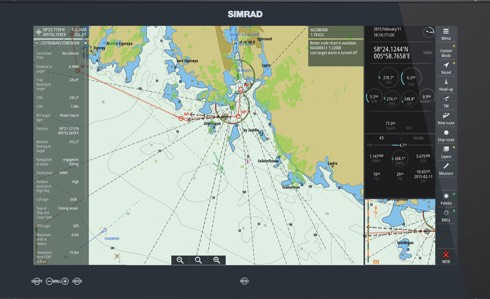
On 9 April Simrad announced its new E5024 ECDIS system, an IMO type approved navigation device aimed at the commercial shipping markets.
This system is an IMO type-approved navigation system, designed for use aboard SOLAS vessels including large passenger ships, tankers, and cargo ships subject to the ECDIS Carriage Mandate. It is understood that this equipment is ideal for vessels required to retrofit ECDIS to meet amended SOLAS requirements, the modular E5024 ECDIS system is said to offer simple installation in either single-station or dual-station (PLECDIS) configurations.
Galileo fully operational again
 The new Papette Uplink Station in Tahiti, French Polynesia, used for uplinking navigation messages to users rebroadcast from Galileo satellites. © ESA
The new Papette Uplink Station in Tahiti, French Polynesia, used for uplinking navigation messages to users rebroadcast from Galileo satellites. © ESA
On 9 April the European Space Agency (ESA) reported that the worldwide Ground Mission Segment providing all Galileo navigation messages has completed a full-scale hardware and software migration to version V2.0, and is now fully operational again.
The Ground Mission Segment was turned off on 26 January, allowing the migration to take place over the month of February. The following month was taken up with detailed checking by operations and system, concluding in a final ‘check point’ on 31 March to validate the successful migration.
Lunar New Year travel
adds to strong traffic growth
in February
 The International Air Transport Association (IATA) has announced global passenger traffic results for February showing a strengthening in demand growth compared to February 2014.
The International Air Transport Association (IATA) has announced global passenger traffic results for February showing a strengthening in demand growth compared to February 2014.
Total revenue passenger kilometres (RPKs) rose 6.2%, which was an improvement on the January year-over-year increase of 4.5%. Monthly results were positively impacted by the Lunar New Year holiday which occurred in February this year, one month later than in 2014. February capacity (available seat kilometres or ASKs) increased by 5.6%, and load factor rose 0.5 percentage points to 78.5%.
Said Tony Tyler, IATA’s Director General and CEO: ‘Lunar New Year celebrations, particularly in the Asia-Pacific region, certainly contributed to the robust February performance, but it is also clear that solid demand for connectivity is offsetting economic weakness in some regions including the Eurozone.’
ICAO to host series of
meetings on Africa and
Indian Ocean region (AFI)
 It was announced from Montreal on 1 April that the International Civil Aviation Organization (ICAO) will be hosting a series of important open and invitation-only meetings this May, as it continues to further its strategic objectives and enhance the aviation network supporting its Africa and Indian Ocean (AFI) Region.
It was announced from Montreal on 1 April that the International Civil Aviation Organization (ICAO) will be hosting a series of important open and invitation-only meetings this May, as it continues to further its strategic objectives and enhance the aviation network supporting its Africa and Indian Ocean (AFI) Region.
Dubbed ‘AFI Aviation Week’, the group of meetings will take place from 18-21 May in Maputo, Mozambique. They will include the first meeting of the AFI Security/Facilitation (SECFAL) Initiative Steering Committee (invitation-only) on 18 May; the Fifteenth Comprehensive Regional Implementation Plan for Aviation Safety in Africa (AFI Plan) Steering Committee Meeting (invitation-only) on 19 May; the Second AFI Aviation Safety Symposium (open session) on 20 May; and lastly a meeting of the AFI Human Resources Development Fund (HRDF, invitation-only) on 21 May.
Eurocontrol: Implementing centralised services

New links are being forged to unite all European ATM stakeholders in a bold collaborative venture to provide essential services for the benefit of all airspace users. This was announced by EUROCONTROL on 19 March.
Better known as centralised services, once implemented, they should make for net savings of up to €1.6 billion over ten years as overlapping ATM investments on a national basis are reduced, it is understood. By eliminating fragmentation and its consequent costs, centralised services will enhance performance in general and safety performance in particular; they will improve interoperability and ensure that Europe’s air navigation service providers (ANSPs) have access to the world’s most advanced ATM technology.
Galileo moved
The seventh and eighth Galileo satellites, set for launch together at the end of the week ahead, have been fitted together onto the dispenser that will carry them during their flight to orbit. Next, the dispenser plus satellites will be placed onto the Fregat upper stage of their Soyuz ST-B launcher.
As much a spacecraft as a launch stage, the re-ignitable Fregat will haul the Galileo satellites most of the way up to their final orbital altitude, once the first three stages of the Soyuz have taken them up to their initial orbit.
 Europe’s seventh and eighth Galileo satellites, fixed to their dispenser, being transported to the 3SB preparation building on 18 March. It is here that they are mated to their Fregat upper stage and then encapsulated within their launch fairing. The pair of satellites will be launched by Soyuz ST-B on 27 March 2015. Note the protective metal panels covering the solar wings folded against the sides of the Galileo satellites. – © ESA/CNES/ARIANESPACE-Service Optique CSG
Europe’s seventh and eighth Galileo satellites, fixed to their dispenser, being transported to the 3SB preparation building on 18 March. It is here that they are mated to their Fregat upper stage and then encapsulated within their launch fairing. The pair of satellites will be launched by Soyuz ST-B on 27 March 2015. Note the protective metal panels covering the solar wings folded against the sides of the Galileo satellites. – © ESA/CNES/ARIANESPACE-Service Optique CSG
13th International Symposium
on Vessel Traffic Services

Readers are advised that 30 March 2015 is the closing date for submission of abstracts.
Details of the topics to be discussed are to be found on the attached Call for Presenters pdf.
Terma Scanter 5502 radar for Düsseldorf and Munich
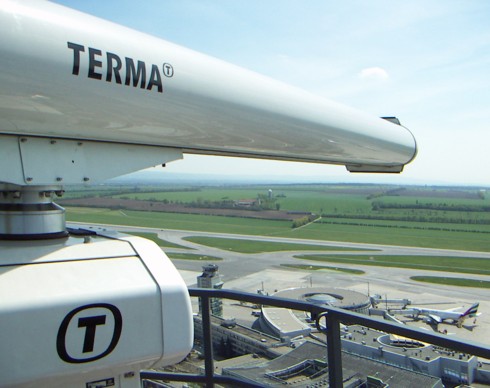 Terma 5502 unit at Vienna Airport
Terma 5502 unit at Vienna Airport
It was announced from Lystrup, Denmark, on 11 March that Terma has been contracted by Avibit Air Traffic Solutions to deliver and install a SCANTER 5502 Surface Movement Radar (SMR) to Deutsche Flugsicherung GmbH (DFS) in Düsseldorf Airport. The New Generation of Solid State SCANTER radar will be working along with the already operational SCANTER 2001 installed in nine German airports and underline the long-term relationship between Terma A/S and DFS going back to the first installation in 1999.
Munich Airport has also chosen SCANTER 5502 to replace the current Terma
240100, it is understood.
 Terma 5502 unit at Nice Airport
Terma 5502 unit at Nice Airport



 Click to view
Click to view